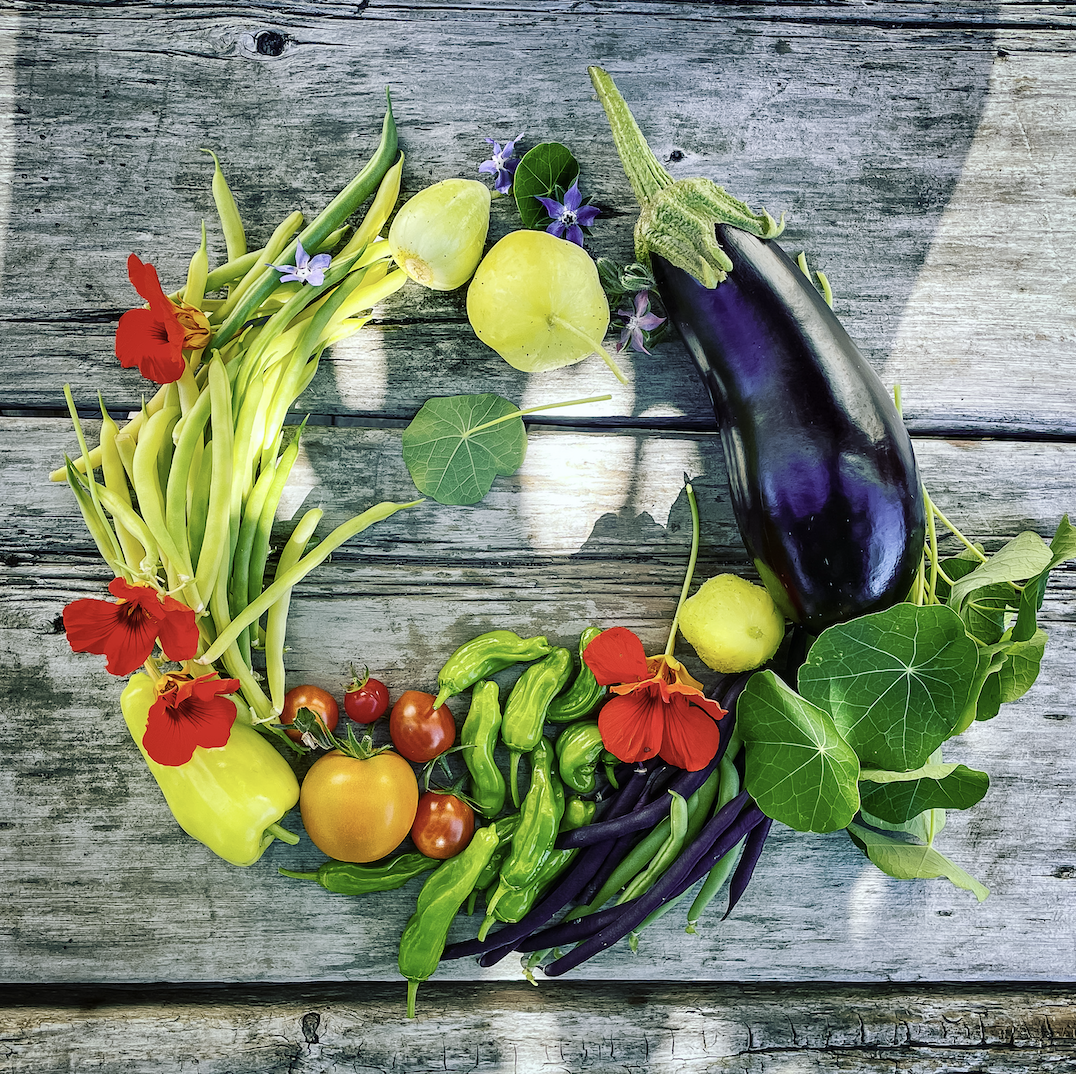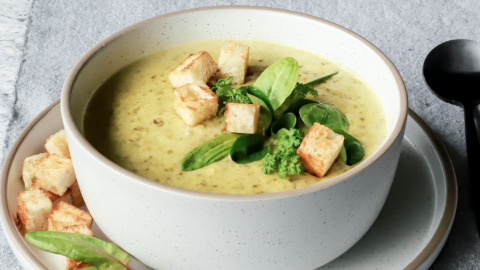The Odd & the Edible
This gardener’s favourite season is here! I’ve waited out the cold months and now I can finally start planting.
I’ve got the usual garden suspects and a few new ones to try out. Over the years, I’ve tried many new and unusual vegetables, some more successful than others, but all fun to try. Space, sun, moisture requirements and time to maturity are all factors I’ve considered in this list. These can all be grown in Zones 7–9, with many able to stand much colder temperatures. Choose what suits your own garden's strengths best and add more flavour, colour and adventure to your garden this year.
Green
Mache, also known as corn salad, is a mild tasting, slightly tart green with a hint of sweetness. Plant it once and let the last few go to seed, and it will self-sow itself each year. It pops up early; mine started growing in mid-February this year, making it the first salad greens of the season in my garden. This tender green is most common in salads but also a great addition to sandwiches, smoothies, soup and pesto.
Puntarelle is a unique-looking chicory from Italy that grows a bundle of stalks with jagged pointy leaves that look a bit like common dandelion leaves (puntarelle is in the dandelion family). It is slightly bitter with a hint of fennel flavour and when in season, Italians serve it as a simple appetizer salad dressed with a bold garlic anchovy dressing. Soak chopped puntarelle in cold water and it will form curly spirals.
Sorrel is a favourite that I’ve grown as a perennial for years now. Light tasting with a definite flavour of lemon when served raw, it’s famous as the star of sorrel soup and the famous French recipe, salmon with sorrel sauce. It is a hardy plant that starts early in the year and survives light frosts in the fall. Plant it once and it will come back each year in the same spot. It is quite prolific, so 1–3 plants are plenty for most gardeners.
Wild
Salsola komarovii, or it’s Italian counterpart, Salsola soda, are also known as saltwort, monk’s beard or agretti. It is naturally salty, drawing sodium from the ground as it grows. This variety of saltwort needs lots of warmth to germinate but then grows quickly. An annual that self-seeds easily, it’s crunchy, mild, salty and can be slightly bitter or sour. It is enjoyed raw in salads and sushi or steamed and served as a side vegetable. It can also be dried and ground into a healthy salt substitute.
Fiddleheads are the new shoots of the ostrich fern or Matteuccia struthiopteris. The small, coiled ferns must be picked when small and tender if you want to eat them. Fiddlehead ferns like shade with some dappled sunlight along with moist but well drained soil. They are a perennial so once the crowns are established, you can harvest about 1/3 of the new fiddleheads each year. Fiddleheads must be cooked before eating, but they are easy and delicious simply boiled or steamed and dressed with butter, salt and pepper.
Seakale is another wild vegetable that will grow easily in our climate. It prefers the moist and cool of Zone 4–8 climates. Pick the shoots young when only about four to five inches high and cook as you would asparagus. If it gets older and flowers, enjoy the edible flowers in salads and as garnishes.
Root
Oca is grown and harvested for its starchy root and is common in South American countries. It is a compact and attractive plant. With a taste somewhere between a potato and Jerusalem artichoke, Oxalis tuberosa is cooked and used like potatoes but it can also be eaten raw. It has a bit of lemon flavour (from the oxalic acid, just like it’s relative sorrel), and the leaves can be enjoyed in salads too.
Lotus root won’t be for everyone but if you have a pond, it can be for you. It’s an easy pond crop to grow in Zones 4–10 but needs protection from freezing in the winter. You might recognize this beautiful tuber from bags of fancy chips or a garnish with your sushi. Lotus root has a pattern of holes in the middle that give it a striking look when sliced crosswise. Small young roots can be eaten raw but more mature ones should be cooked.
Celeriac takes a long time to reach maturity but is attractive in the garden and quite pest resistant. Start seedlings indoors in mid-late winter for a fall harvest or start in spring or summer for a harvest the following year. It is delicious roasted or mashed, similar to potatoes but with much less starch.
White salsify (true salsify) and black salsify is a long taproot vegetable like carrots, parsnips and horseradish. It is a very easy vegetable to grow. Sow it from seed right into the ground because it doesn’t tolerate transplanting well and choose a spot with plenty of sun. With a flavour somewhat like an artichoke, it can be peeled and cooked like parsnips or cauliflower. Wear gloves when peeling or boil it for 10 minutes before peeling to avoid the messy white latex-like sap.
Ornamental
Artichokes and cardoons are stunning plants in a garden. They are large plants that take up a lot of space so they are better off in larger gardens. In warmer climates, artichokes and cardoons are perennial. If covered, they can survive in our climate as a perennial, or you can grow them as annuals which has been what I have done. I’ve had up to 10 artichokes on one plant when the seeds were sown early and raised in a greenhouse before being transplanted out in May. Both are delicious steamed and served with melted butter or used in many other creative recipes including stuffed. Baby artichokes can be trimmed and shaved thin to eat raw in salads.
Kohlrabi is a crisp and tasty vegetable related to kale but it develops a large, edible bulb at its base which is the best part. Be sure to pick it before it gets too large and woody. Kohlrabi grows well on Vancouver Island. You can choose white or green, but I love to plant the purple ones for extra colour in my garden.
Romanesco and Fioretto are a great alternative to broccoli and cauliflower. Romanesco is a gorgeous chartreuse-green with uniquely patterned florets and Fioretto is a sprouting cauliflower with long stalks. These grow similarly to broccoli and cauliflower and can be used in all the same recipes. They make for stunning vegetable platters and salads.
Yardlong beans, also known as asparagus beans are super long, stringless green beans that are harvested at one to three feet long! Plants start slowly as a small bush and when the heat hits the plant grows rapidly up, like pole beans. With pretty flowers and an impressive amount of growth, these are lovely for areas that can use a little summertime privacy. Pick these long beans before the seeds fatten for tender eating and to keep it producing.
...and the list goes on!
I don’t have the space to list all the fun and adventurous edibles you can grow, but here are a few more varieties that can also be grown locally:
-
Black nebula carrots (bright purple vegetable that keeps their colour when cooked)
-
Castelfranco radicchio
-
Chayote
-
Chinese pink celery
-
Chioggia striped beets
-
Cucamelons and lemon cucumbers
-
Dragon tongue bush beans and purple King Tut peas
-
Edamame beans
-
Egyptian walking onions—like chives but hardier
-
Glass gem corn (a multicoloured, Easter egg-like corn)
-
Ground cherries, tomatillos and boldly coloured Brad's atomic grape tomatoes
-
Horseradish
-
Japanese eggplant
-
Miners lettuce (aka Claytonia)
-
Peruvian purple potatoes with fiery colours
-
Pink watermelon radishes or black Spanish radish
-
Purple sprouting broccoli
-
Shishito peppers
-
Shiso (used as herb and salad green)
-
Strawberry spinach (a wild species)
-
Sunchokes






